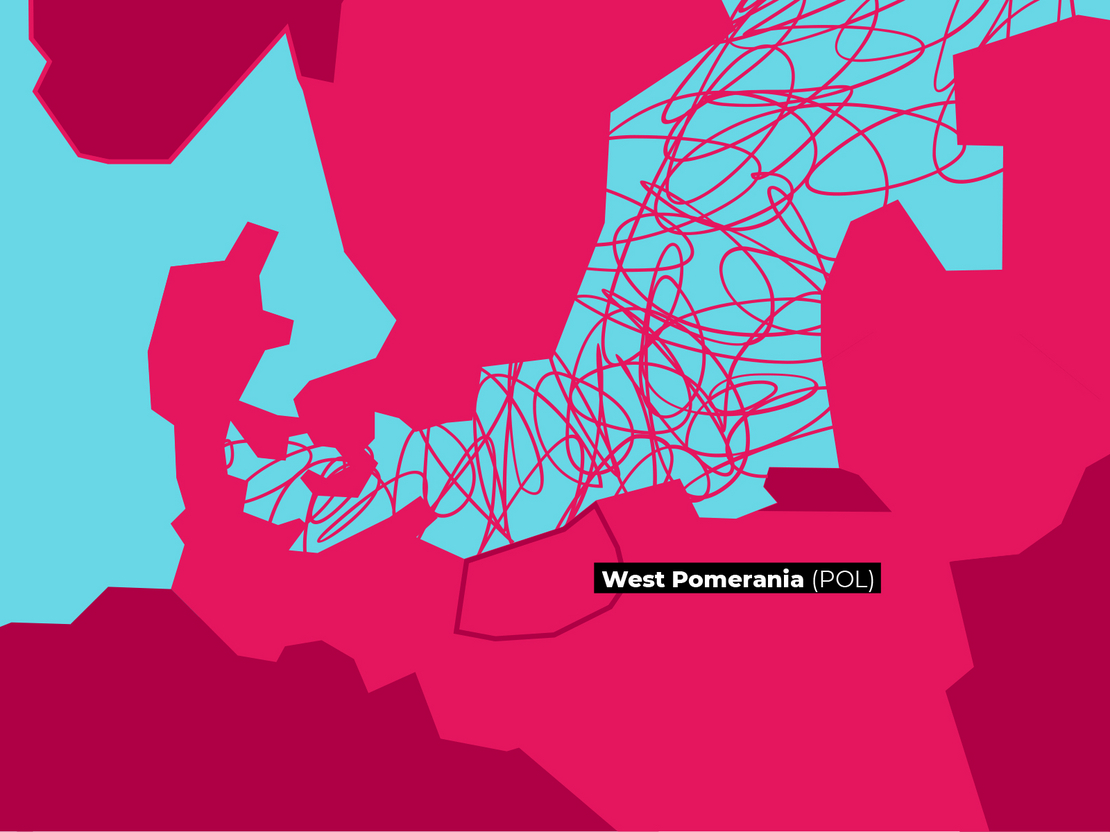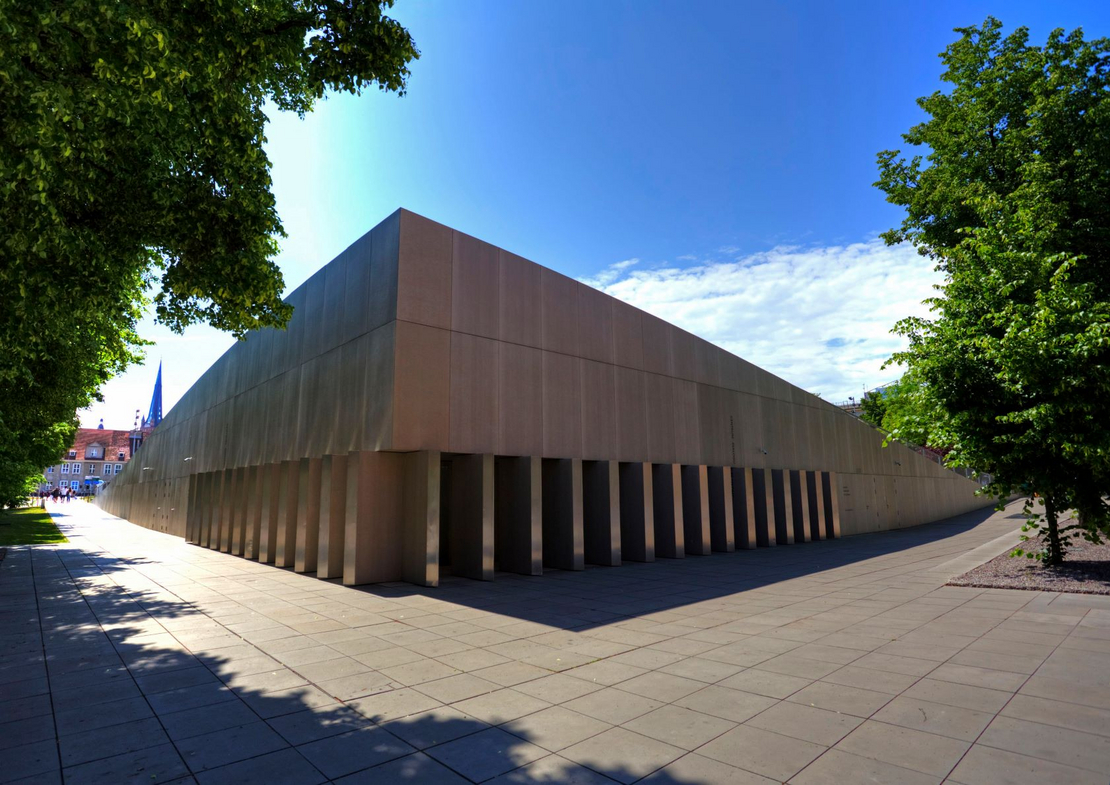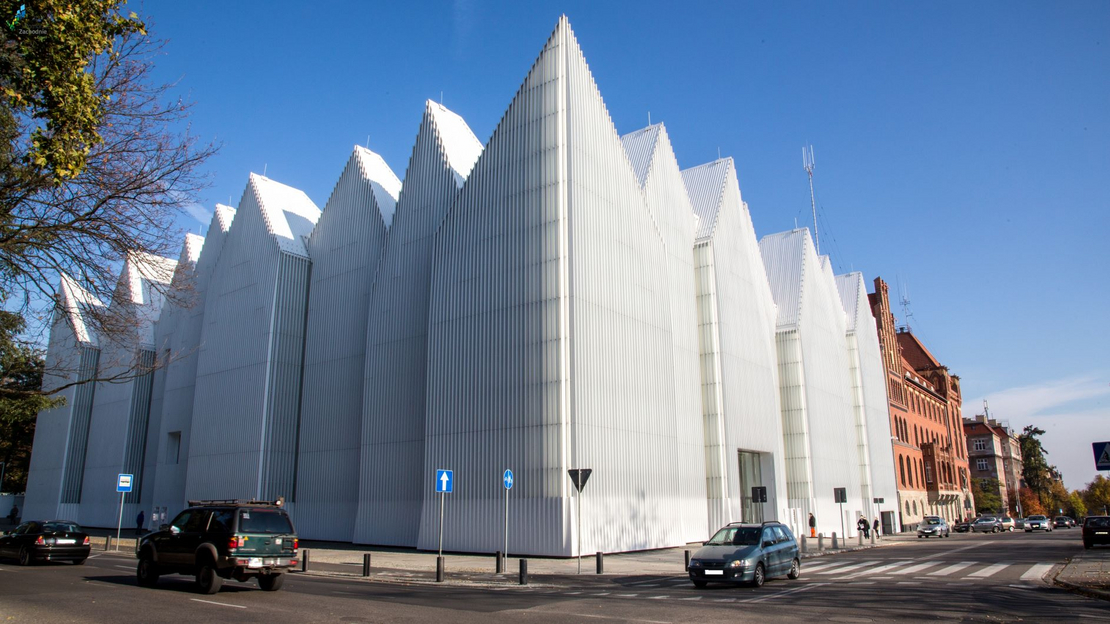Westpomerania Region, Poland
| NUTS code | PL42 |
|---|---|
| Population | 1.70 Million |
| Area in km² | 22.897 km² |
| GDP/inhabitant (year) | 40.592 PLN (2016) |
| GDP growth rate (year) | 2.5% (2016) |
| Unemployment rate (year) | 7.8% (2017) |
| Cohesion Policy category | Less developed region |
Number of support organizations: 17
Global creativity index – GCI, country level: 0,516 (2015)
Regional Entrepreneurship Development Index – REDI: PL 4 Północno-Zachodni: 51.5 (2017)
1. Introduction
West Pomerania is the fifth largest region of Poland and it is situated in the North Western part of Poland. Szczecin, the capital city of West Pomerania, along with the surrounding metropolitan area has nearly 650,000 inhabitants. The Region is divided into 18 counties and 3 towns with county rights. The counties comprise of 113 municipalities: 11 town municipalities, 55 town and village municipalities and 47 village municipalities.
The discussion concerning which activities should be contained in the concept of “creative industry” has been going on for years. Following the definition of “creative industry” adopted by the British government, it is commonly acknowledged that creative industries are “those industries which have their origin in individual creativity, skill and talent and which have a potential for wealth and job creation through the generation and exploitation of intellectual property”.
Although there is no single acknowledged list of industries belonging to the CCI sector, the commonly listed industries are: advertising and marketing, architecture, crafts, design (products, graphics, fashion), film, television, video, radio and photography, IT, software and computer services, publishing sector, museums, galleries and libraries, music, performing and visual arts. The Region has not set out priorities for specific CCI branches, but fashion design, IT and leisure time industry are among the most popular. The ICT and fashion sectors are relatively the most internationalized due to their specificity.
2. General information about the West Pomeranian Region
In 2017 there were 223,130 business entities of national economy in the Region (which constituted 5.2% of entities in the entire country; 214,484 entities in the private sector).
Table 1. Selected national and regional data in 2017
| Data | Poland | West Pomeranian Region |
|---|---|---|
| Population per 1 km² of the total area | 123 | 75 |
| Rate of natural increase per 1000 people | -0,02 | -0,89 |
| Gross domestics product (nominal) per capita in PLN | 48,432 | 40,592 |
| Business entities | 4,309,800 | 223,130 |
| Business entities per 10,000 people | 1122 | 1307 |
| Working people per 1000 people | 247 | 210 |
According to the Main Statistical Office in 2016, there were 800 entities, mainly in the fields of photography, specialist design and branches, which contain commercial entities relating to design, culture combining arts and entrepreneurship. The main branches are ICT connected, advertising, publishing and TV and film related.
3. Economy
Economic importance of the CCI sector in the region
The economic importance of individual CCI branches on a national scale is presented in the table below.
Table 2. Selected annual indicators of companies operating in selected subsectors of creative industries in 2016 (national data)
| Sector | Number of entities | Turnover or gross assigned premiums – millions EUR | Value of production– millions EUR | Salaries - millions EUR | Number of persons employed | Number of employees | Average personnel costs – thousands EUR | Number of persons employed per entity |
|---|---|---|---|---|---|---|---|---|
| Information and communication | 94 054 | 31 099.5 | 28 144.6 | 4 865.4 | 357 902 | 256 691 | 22.4 | 3.8 |
| Publishing | 6 451 | 2 954.7 | 2 700.3 | 551.3 | 39 988 | 32 791 | 19.7 | 6.2 |
| Production of films, video and television programmes, sound recording and publishing | 8 153 | 2 121.1 | 2 233.6 | 127.1 | 16 282 | 7 270 | 20.0 | 2.0 |
| Programming and broadcasting activities | 347 | 2 471.1 | 2 526.3 | 325.3 | 14 722 | 14 429 | 26.0 | 42.4 |
| Computer programming, consulting and related activities | 61 769 | 10 884.9 | 9 621.0 | 2 547.8 | 189 733 | 123 623 | 24.3 | 3.1 |
| Information service activities | 10 881 | 2 630.8 | 2 381.1 | 476.5 | 41 307 | 29 711 | 19.3 | 3.8 |
| Management consulting | 43 886 | 5 423.0 | 5 280.3 | 1 050.8 | 112 224 | 67 089 | 18.4 | 2.6 |
| Architectural and engineering activities; technical tests and analyses | 62 555 | 5 606.8 | 5 437.4 | 916.5 | 141 215 | 74 518 | 14.6 | 2.3 |
| Research and development | 2 448 | 651.3 | 658.7 | 204.4 | 12 876 | 9 988 | 24.0 | 5.3 |
| Advertising and market research | 28 365 | 7 593.7 | 7 260.5 | 745.6 | 77 374 | 46 128 | 18.9 | 2.7 |
| Other professional, scientific and technical activities | 42 317 | 2 250.3 | 1 943.0 | 261.7 | 64 984 | 20 520 | 15.2 | 1.5 |
| Specialized design activities | 10 005 | 440.7 | 431.4 | 57.1 | 15 344 | 4 756 | 14.3 | 1.5 |
| Photographic activity | 9 202 | 200.4 | 122.6 | 24.2 | 12 435 | 2 797 | 10.4 | 1.4 |
Source: Eurostat.
International links
The location of the region at the crossroads of Europe's major transport routes is a big advantage:
- North-South, from Scandinavia to Southern and South-Eastern Europe;
- East-West, from Western Europe to the Baltic States, Russia, Belarus, Ukraine and further to Asia.
The Region has a well-developed road network and motorway connection with Western Europe and accessibility for inland waterway transport – towards Lower Silesia and Berlin.
Companies from the CCI branches may take advantage of the proximity of the border with Germany and a large economic centre like Berlin, and many of them cooperate with the Scandinavian countries.
Although there is no public information as to the international trade of the Region in selected CCI branches and with individual countries, it can be assumed that the share in the national exchange does not differ greatly from the Region’s share in GDP (ca. 3.7%). The exchange is determined by the region’s location: direct access to the Baltic Sea and the neighbourhood of Germany and Scandinavian countries, as well as regional specialisations, among which there are services of the future – ICT, IT, KPO, or CCI.
Table 3. Net revenues from sale of export products as the share of net revenues from sale of products in 2017
| Industry | Westpomerania region | Poland |
|---|---|---|
| Manufacturing | 59,7 % | 47,7 % |
| High-technology | 58,3 % | 72,4 % |
| Medium high-technology | 61,7 % | 68,3 % |
| Medium low-technology | 57,8 % | 38 % |
| Low-technology | 59,7 % | 35,5 % |
Source: Poland Quarterly Statistics
The Region cooperates with partner regions of the EU Member States (e.g. experiences exchange in the field of managing European funds in strategic areas). The cooperation is determined by common initiatives relating to economic development, innovation and modern technologies, tourism, science and education, art and culture, agriculture and forestry, healthcare, transport, creating modern administration, etc.
4. Regional business eco-system
Types of support
Several selected organizations operating in the West Pomeranian Region:
| Name | webpage | |
|---|---|---|
| Szczecin Scientific and Technological Park Limited Liability Company | www.technopark-pomerania.pl/ | biuro[at]spnt.pl |
| The Regional Centre for Innovation & Technology Transfer in Szczecin | https://www.innowacje.zut.edu.pl/ | innowacje[at]zut.edu.pl |
| The Westpomeranian Regional Development Agency in Szczecin | http://www.zarr.com.pl/ | zarzad[at]zarr.com.pl |
| The Koszalin Regional Development Agency | http://karrsa.eu/ | karrsa[at]karrsa.pl |
| Service InterLab Centre for the Transfer of Knowledge and Innovation for Service Sector | www.serviceinterlab.pl/?id=100 | service.inter-lab[at]wzieu.pl |
| Stargard Industrial Park | https://www.stargard.pl/Stargard-Industrial-Park | e.dziegelewska[at]poczta.um.stargard.pl |
| Goleniów Industrial Park | www.goleniow.business/ | ugim[at]goleniow.pl |
| Westpomeranian Loan Guarantee Fund in Szczecin | https://funduszpomerania.pl/ | biuro[at]funduszpomerania.pl |
| Szczecin Loan Fund | www.fundusz.szczecin.pl | fundusz3[at]o2.pl |
| Westpomeranian Economic Development Association | https://zsrg.szczecin.pl/en/ | zsrg[at]zsrg.szczecin.pl |
| Innovation and Entrepreneurship Centre Foundation in Koszalin | https://www.fundacja.koszalin.pl/ | biuro[at]fundacja.koszalin.pl |
| Northern Chamber of Commerce in Szczecin | http://www.izba.info/ | sekretariat[at]izba.info |
| Koszalin Chamber of Industry and Commerce | www.pig.koszalin.pl | biuro.koszalin[at]izba.info |
| Polish Entrepreneurs Foundation in Szczecin | http://pfp.com.pl/ | pfp[at]pfp.com.pl |
| Academic Careers Offices at Universities | www.abk.univ.szczecin.pl/ | abk[at]usz.edu.pl |
| Business Link Szczecin | http://blszczecin.pl/ | szczecin[at]blpoland.com |
| Academic Business Incubators. | https://inkubatory.pl/ | aip[at]inkubatory.pl |
Source: Stowarzyszenie Media Dizajn, op. cit.
The organisations most engaged in supporting CCI in the region are incubators, accelerators and universities.
Table 5. Types of organisations engaged in the structure of CCI support in the West Pomeranian Region
| Public | Private | |
|---|---|---|
| Incubators | X | |
| Accelerators | X | |
| Co-working | X | X |
| Communities | X | |
| Universities | X |
Source: Stowarzyszenie Media Dizajn, op. cit.
The main creative spots are in the area of Szczecin are the Academy of Art, Cultural Incubator, Technopark Pomerania where the ICT cluster is located. All of them are situated in Szczecin. There is also the department of Design at the Technical University in Koszalin.
The gaming industry was enrolled as a national scientific specialization, which means that this group of activities has a greater possibility to raise public funds for research and development. Moreover, the Ministry of the Economy and some regional authorities introduced tailored grant schemes to foster their development. The list of National Scientific Specializations was accepted by the Polish government on 8 April of 2004; see Ministry of the Economy (2014).
5. CCI in the region - Overview of the role of CCI sector in regional business
There are several regional entities associated with CCI:
| Special Economic Zones | Kostrzyńsko-Słubicka SEZ Słupska SEZ Pomorska SEZ SEZ Euro-Park Mielec |
| Industrial and Technology Parks | Szczecin Industrial Park Technopark Pomerania in Szczecin Białogard Investment Park „Invest-Park” Goleniów Industrial Park |
Source: https://www.paih.gov.pl/regiony/wojewodztwa/zachodniopomorskie
CCI support and development system
There are several CCI development & support strategies:
Regional Strategic Programme: Creative industries and Leisure time industries (2013)
The program was created in connection with the introduction of a new management system for the implementation of development strategies and sectoral policies of the Westpomeranian Region. Programme and other strategic documents does not indicate the particular importance of any of the sub-sectors.
- National Development Strategy 2020
- Poland 2030 - Development challenges
The National Development Strategy 2020 points out that the sales of goods and services with added value, created by intellectual property, keep growing constantly and creative industries will soon have the same significance as traditional industries. Furthermore, the Poland 2030 underlines the importance of development of intellectual capital and knowledge-based economy as crucial challenges that Poland needs to address.
The main tools for creating and disseminating knowledge in the region are: R&D investments, universities, technological cooperation between companies, diffusion of technologies, broadband access. In the region, government support for SMEs is: talent development (making money on talents), education (training), investment (co-financing of training, studies, innovations), tax incentives, a digital one-stop shop, integration policy (one office representing specific interests), development of clusters (building nodes to reduce market access costs), access to finance for SMEs (cheap loans to reduce capital barriers), branding (brand establishment at a city and national level), market access (trade fairs, festivals and international trade), IP development (diplomatic and legal support).
Governmental level support institutions:
- The Ministry of Culture and National Heritage, Department of Foreign Cooperation, responsible for funding projects whose main objective is to promote internationally the most valuable phenomena in Polish culture.
- The Adam Mickiewicz Institute, a state-owned art institution entrusted with the task of promoting Polish culture.
The above-mentioned institutions focus their activities mostly on the so-called high culture. The remaining part of CCI activities are promoted internationally by other institutions, such as:
- The Polish Tourist Organization
- The Polish Information and Foreign Investment Agency
- Chambers of Commerce and associations
- The Ministry of Foreign Affairs, which becomes involved in promotional activities if and when authorized to do so by the Prime Minister
The biggest challenge indicated by business were employment costs (59.4% in February in 2019, 52.7% in 2018). There was a large decrease in the problems associated with unclear, inconsistent and unstable legal regulations (from 41.8% to 28.5%), whereas the problem whose significance increased the most was the competition with other national entities (from 23.5% to 32.5%).
6. Knowledge base and skills
According to experts, in the West Pomerania region there are around 3,950 people employed in culture, entertainment and recreation (as at 30.06.2016). The majority of them (3,650) is working in the private sector and 245 working in the public sector. According to research conducted by Northern Chamber of Commerce there were more than 11,000 people employed in the sector and around 2,000 in Szczecin (Northern Chamber of Commerce, 2018).
CCI Sector most likely employed around 15-30% of people in region. It was estimated that within the CI sector companies employed that some 60% is self-employed while the rest, approximately 40%.
In describing the average employed experts gave the following feedback: the average CI employee is rather young (20-35 years old), creative, with higher education, likes new fashion trends, as well as technology and ICT. Most people working in CI have had a higher education (46% – 47%).
In 2017 there were 19 universities in the region, 10 of which are non-public. Total number of students was 42000.
Main universities:
- University of Szczecin – main courses: economy, law, biology, mathematics and physics;
- West Pomeranian University of Technology in Szczecin – main courses: construction, chemistry, informatics, mechanics, electrics, biotechnology;
- Koszalin University of Technology – main courses: economy, electronics, informatics, mechanics, construction;
- Pomeranian Medical University in Szczecin – main courses: medicine, dentistry, cosmetology;
- Maritime University of Szczecin – main courses: navigation, ship mechanics, transport, logistics;
- Academy of Art in Szczecin – main courses: artistic education in the field of musical art, instrumental studies, interior design.
In the region, there are over 2500 students in the fields of information technology. 400 graduates complete it each year.
7. Regional CCI development outlook
According to experts, there are no priorities for specific CCI industries in the region. The region needs systematic work, education, information and promotion to become a good place to conduct CCI activities, which can be provided by organizations supporting creative industries.
In order to develop the local ecosystem, more practical educational activities are needed in the field of entrepreneurship and stronger support of the university and mentoring in the creation/sale/marketing of technological products.
The region, which up until recently was mostly associated with shipbuilding and agriculture, has been developing various economy sectors, mainly those associated with modern technologies. The Region is also increasingly using well-developed higher education and scientific base, dynamically developing institutions supporting business, fast-growing private sector, including services sector.
The IT industry is key for the development of Szczecin, and many foreign technology corporations have their offices here (over 4,000 IT companies with several thousand specialists). For 10 years the Netcamp foundation has been building in Szczecin the largest tech/start-up community in western Poland, organizing inspirational IT meetings (awarded with the European Enterprise Award). Every year, the Polish-German Startup Weekend Szczecin takes place.
In few last years there were some strategic documents that underlined the importance of CCI, especially the intelligent specialization of regional creative sectors which are shown as the key for the region. Proposed courses of action at the local level are thus: - cluster formation and development of the creative sector - identifying the model of cooperation between culture and business - developing effective creative partnerships.
References
- https://pl.wikipedia.org/wiki/Wojew%C3%B3dztwo_zachodniopomorskie#Administracja_pa%C5%84stwowa.
- Departament for Culture Media and Sport of the UK, Creative Industries Economic Estimates, January 2015, Statistical Release 13/01/2015, p. 4.
- Ibidem, p. 33
- Stowarzyszenie Media Dizajn, op. cit.
- Stowarzyszenie Media Dizajn, op. cit.
- Statistical Office in Szczecin, Statistical Yearbook of the West Pomeranian Voivodship (Rocznik Statystyczny województwa zachodniopomorskiego).
- Statistical Office in Szczecin, Structural changes of groups of entities of the national economy in the REGON register in the West Pomeranian Voivodeship, 2017 (Zmiany strukturalne grup podmiotów gospodarki narodowej w rejestrze REGON w województwie zachodniopomorskim, 2017 r)., p. 10-11, 13-14.
- http://www.portalspozywczy.pl/technologie/wiadomosci/eksport-z-zachodniopomorskiego-nabierze-wiatru-w-zagle,129612.html
- https://ec.europa.eu/growth/tools-databases/regional-innovation-monitor/base-profile/west-pomeranian
- Priorities of foreign cooperation of the West Pomeranian Voivodeship (Priorytety współpracy zagranicznej województwa zachodniopomorskiego), draft resolution of the 2016 West Pomeranian Regional Assembly (Sejmik Województwa Zachodniopomorskiego). See also: http://www.wwt.wzp.pl/regiony-partnerskie.
- Stowarzyszenie Media Dizajn, op. cit.
- https://www.paih.gov.pl/regiony/wojewodztwa/zachodniopomorskie
- www.coi.wzp.pl/region-2/infrastruktura.
- https://www.paih.gov.pl/regiony/wojewodztwa/zachodniopomorskie
- Stowarzyszenie Media Dizajn, op. cit.
- http://www.coi.wzp.pl/region-2/regionalne-i-inteligentne-specjalizacje
- Marshal's Office of the West Pomeranian Voivodeship, List of smart specializations of the West Pomeranian Voivodeship (Wykaz inteligentnych specjalizacji województwa zachodniopomorskiego), p. 4.
- Marshal's Office of the West Pomeranian Voivodeship, List of smart specializations of the West Pomeranian Voivodeship (Wykaz inteligentnych specjalizacji województwa zachodniopomorskiego), p. 5-6.
- Stowarzyszenie Media Dizajn, op. cit.
- https://pl.wikipedia.org/wiki/Wojew%C3%B3dztwo_zachodniopomorskie#cite_note-142
- Priorities of foreign cooperation of the West Pomeranian Voivodeship (Priorytety współpracy zagranicznej województwa zachodniopomorskiego), draft resolution of the 2016 West Pomeranian Regional Assembly (Sejmik Województwa Zachodniopomorskiego). See also http://www.wwt.wzp.pl/regiony-partnerskie
- https://www.paih.gov.pl/nasze_uslugi/ekspansja_zagraniczna/branzowe_programy_promocji
- Central Statistical Office in Szczecin, Economic situation, opinions formulated by entities based in the West Pomeranian Voivodeship - February 2019.
- https://www.paih.gov.pl/strefa_inwestora/grant_rzadowy
- https://www.paih.gov.pl/strefa_inwestora/zachety_inwestycyjne_w_sse
- https://www.paih.gov.pl/strefa_inwestora/parki_przemyslowe_i_technologiczne/szczecin_pp oraz www.szczecinpark.pl
- https://www.paih.gov.pl/strefa_inwestora/zwolnienie_z_podatku_od_nieruchomosci
- https://www.paih.gov.pl/strefa_inwestora/zachety_inwestycyjne/centra_badawczo-rozwojowe
- https://www.ndpculture.org/media/W1siZiIsIjIwMTcvMTEvMTYvOGVhZWpubHd3Nl8xMV9ESU1FTlNJT05TX0NDSS5wZGYiXV0/11_DIMENSIONS_CCI.pdf?sha=e70086627c6b8db3
- Startup Poland, Polish Startups. 2017 Report, p. 62.
- https://southbaltic.eu/documents/18165/144824/smart057_Socio%20economic%20analysis%20of%20design%20and%20creative%20industry%20impact%20on%20a%20regional%20level.pdf/7e846a47-c8a0-49e9-8e4c-4ab105eec832
- Startup Poland, 2017 Report, p. 63.
- http://www.polskawliczbach.pl/zachodniopomorskie#edukacja-i-szkolnictwo
- Startup Poland, 2017 Report, p. 63.
- https://www.paih.gov.pl/regiony/wojewodztwa/zachodniopomorskie
- Startup Poland, Raport 2017, str. 63.
- Priorities of foreign cooperation of the West Pomeranian Voivodeship (Priorytety współpracy zagranicznej województwa zachodniopomorskiego), draft resolution of the 2016 West Pomeranian Regional Assembly (Sejmik Województwa Zachodniopomorskiego). See also http://www.wwt.wzp.pl/organizacje-regionalne/bdf






